Effect of Emulsifier on Quick Frozen Spring Roll Skin
Release Time:2019-05-22 14:18:53
Hits:
With the development of quick-freezing technology and people's demand for traditional foods, quick-frozen spring rolls are deeply loved by consumers because of their delicious, convenient and fast properties. However, in the process of frozen storage and sale of quick-frozen spring rolls, water will migrate from stuffing to spring roll skins and water will be lost from spring roll skins. In addition, the consumption process has to go through many links, such as quick freezing, frozen storage, transportation, sales display and consumer purchase. In these links, the product temperature is easily fluctuated, and even freezing and thawing may occur for many times, resulting in quality problems such as ice crystal aggregation of spring roll skin, skin dehydration, cracking, etc. In addition, the investigation report of the previous users also shows that the oil absorption rate of the quick-frozen spring rolls currently on the market is high, the skin is easy to soften after frying, the crispness retention time is short, and the sensory quality of the products needs to be further improved.
In order to slow down the dehydration and cracking of the spring roll skin and improve the sensory quality of the spring roll, scientific researchers have carried out the improvement of production technology and equipment and the study of the spring roll skin improver. However, emulsifier is the most important kind of additive in spring roll skin improver.
Emulsifier is a multifunctional surfactant and is currently recognized as the best additive for improving dough rheological properties. Emulsifier can promote the formation of gluten protein network when dough is stirred, can also form a compound with starch, prevents the combination between starch molecules, and can also block the migration of water in gelatinized starch to gluten protein, thus delaying starch retrogradation and inhibiting the aging of wheat products. Common emulsifiers include monoglyceride, sodium stearoyl lactate, sucrose ester, diacetyl tartaric acid monoglyceride, lecithin, etc. Using these emulsifiers as raw materials, we systematically analyzed the effects of emulsifiers on the processing characteristics and sensory quality of frozen spring roll skins.
The production process of spring roll skin: weighing samples, mixing pulp, mixing pulp, making skin, cooling, bagging and quick freezing.
1) sample weighing: wheat flour and water (mass ratio: 1:1.1, accurate to 0.01 g) are accurately weighed by an electronic balance, and emulsifier is added according to the experimental design (see table 1). the blank group is the sample without any emulsifier.
Table 1 Types and Dosage of Emulsifiers (Based on Flour)
Kind of emulsifier kind of emulsifier Addition/%
Monoglyceride GMS 0.1 0.3 0.5
Sucrose ester SE 0.1 0.3 0.5
Sodium stearoyl lactylate ssl 0.20 0.40 0.6
Diacetyl tartaric acid monoglyceride datem 0.10 0.30 0.5
Lecithin 0.2 0.3 0.4
2) mixing: the weighed wheat flour is placed in a mixing cylinder of a flour mixing machine, water is quickly and evenly poured into the flour, and the mixing paddle is stirred for 4 min at a speed of 1 gear to obtain smooth and fine flour pulp.
3) Sizing: Place the prepared flour paste in a stainless steel basin, cover it with plastic wrap, and maintain a constant temperature of 25 degrees for 7 hours.
4) Skin preparation: scoop a certain amount of the prepared slurry onto a cake pan set at 120 C, immediately add a mold and weight (4.5 kg), and bake for 1 min to obtain spring roll skin.
(5) cooling, bagging and quick freezing: the finished spring roll skin is cut into 7.5 cmx7.5 cm by a die, packaged by self-sealing bags, quickly frozen in a -40 C ice box for 30 min, then taken out and frozen in a -18 C refrigerator.
1.2.2 Viscosity Variation Curve of Noodle Pulp with Time
The viscosity of flour paste in 0〜10 h was measured by viscometer, and the viscosity-time curve was drawn. The specific operation is as follows: subpackage the freshly prepared flour paste into centrifuge tubes, pour about 45 mL into each tube, and place it in a 25 C thermostat to remove the paste. Take a centrifuge tube at regular intervals to measure the viscosity, and record the viscosity value when starting for 1 min.
1.2.3 Determination of Weight Loss Rate of Spring Roll Skin
The size of 7 cmx2.5 cm was selected as the sample at the center of the prepared spring roll skin, and its mass m 0 (g) was recorded. the sample was placed in a self-sealing bag for quick freezing (-40 C, 30 min) and freezing (-18 C) treatment. The weightlessness rate of frozen storage for 29 days was determined. After frozen storage for a corresponding number of days, spring roll skins with corresponding labels and corresponding quantities were taken out, thawed at 25 C for 30 min, and their mass M(g) was determined. Weight loss rate of spring roll skin is calculated by formula 1 (%) = (m0-m1) x100%/m. The weight loss rate of spring roll skin was measured every 4 d.
1.2.4 Determination of Mechanical Properties of Spring Roll Skin
The hardness and tensile properties of spring roll leather were measured by texture analysis.
1) Hardness: Take 7 cm x 2.5 cm of fresh or thawed spring roll skin and clamp it between the clamping plates of the sample table (the middle part is suspended). Test the hardness (N) of spring roll skin by placing the probe about 1 cm above the spring roll skin. Specific test parameters: force sensor range: 250 N; Initial force: 0.1 N; Test speed: 1 mm/s; Test distance: 15 mm.
2) Tensile Properties
Take a piece of fresh or unfrozen spring roll of 5 cmx6 cm and clamp it between the clamping plates of the sample table (the middle part is suspended). The probe hook is positioned under the spring roll for a certain distance, and the maximum elongation (mm) of spring roll is measured. The test parameters are: speed: 1.0 mm/s; Maximum test force: 250 N; Inspection stroke: 30 mm; Initial force: 0.1 n.
1.2.5 Sensory Evaluation of Spring Roll
The prepared spring roll skin is cut into 7.5 cmx7.5 cm size skin, and bean paste stuffing is packed according to the mass ratio of the skin stuffing to the stuffing of 1:1. The prepared spring rolls are packaged in self-sealing bags, quickly frozen in a -40 C refrigerator for 30 min, then frozen in a -18 C refrigerator for 30 d, taken out, fried in a 170 C oil pan for 3 min, and then subjected to sensory evaluation after cooling. Sensory evaluation was conducted by scoring test method (see Table 2 for specific scoring criteria). The spring rolls were evaluated and determined by 6 trained evaluation personnel, and the tasting was completed within 10 min.
Table 2 Quality Scoring Table for Spring Roll
Evaluation index
Full marks
Scoring rules
Evaluation index
Full mark
Detailed grading rules
The surface is golden yellow with a suitable depth of 15 points.
Skin color
Color and luster of surface
30
There are no obvious spots on the surface of 15 points.
NOOBVIOUS SPORTS 5 POINTS There are no obvious stripes 5 points on the surface
No obvious stripes 5points
The cuticle is full of luster, 5 points, Luster, 5 points.
It has a relatively regular cylindrical shape with no depressions or protrusions.
Appearance rating
Appearance
score
External shape
Outer shape
20
15 points
Regular cylinder 15points have no obvious deformation of 5 points.
No obvious deformation 5points
Skin color uniform 10 points
Curing uniformity
Uniform color and luster of surface
Curing
uniformity
15
10points
Skin brittleness is suitable for 5 points.
Suitable surface brittleness 5 points
Skin texture
Surface
Epidermal non-hardness 5 points No dry or hard 5points
15
Skin does No stick 5points
texture
5 points for external crispness and internal softness
Crisp outside and soft inside 5points
Taste
The whole thing is not dry.
Endoplasmic score
Quality score.
10
The whole is not weak.
Flavor flavor
10
There is a special flavor of spring rolls 10 points
Unique flavor of spring rolls 10points
1.3 Data Analysis and Processing
All tests are repeated (at least 3 times) and the average value is calculated. The standard deviation is taken as the error value, and the error percentage is less than 10%. Is acceptable data. SPSS v.19.0.0 was used to analyze the data: 1) The data were normal and had uniform variance, and single factor analysis of variance (AVONA) was tested by Dunnett t method (P<0.05). 2) the data have no normality or uneven variance. Kruskal Wallis H rank sum test is used (P<0.05).
Results and analysis
Based on the production technology of flour paste in frozen spring roll production enterprises, the appropriate emulsifier types and addition amount are determined according to the viscosity demand of actual flour paste and the viscosity stability of flour paste.
2.1 Determination of Appropriate Addition Amount of Emulsifier
The type and amount of emulsifier will have a greater impact on the viscosity of the pulp. This is mainly due to the fact that the emulsifier itself has hydrophilic and lipophilic groups, which can increase the affinity of food components, reduce the tension on the interface and promote the raw materials to be mixed together evenly. Compared with the blank control, especially in the first 2 h of cooking, the addition of emulsifier makes the viscosity of flour paste decrease slowly, but there are still differences in viscosity value and change speed between different emulsifiers and addition amounts. The viscosity of flour paste is a very important index. It is not only related to the ratio of flour to water, the chemical composition of flour, the way of flour paste preparation, the temperature of preparation, but also related to the type and amount of emulsifying agent. Non-ionic emulsifiers such as monoglyceride and sucrose ester will form thick films on the surface of flour particles, thus changing the flow of particles in flour paste, while anionic emulsifiers such as SSL and DATEM will change the viscosity of flour paste due to changing the charged properties between particles. At the same time, the concentration of emulsifier will affect the dispersion degree of dispersed particles. Taking monoglyceride as an example, the viscosity of flour paste increases for a short time and then gradually decreases with time. According to Dunnett t test, the difference between the viscosity of flour paste with three different addition amounts and the blank control has statistical significance (P<0.05), and the viscosity with addition amounts of 0.1% and 0.5% is far greater than that with addition amount of 0.3%, which may be related to the closer to the critical micelle concentration with addition amount of 0.3%, when the surface tension of the solution reaches the lowest. According to the actual production experience, the suitable time for pulping is 7 h and the viscosity of flour pulp is about 4.57 pa+s. Based on this, the appropriate addition amounts of several emulsifiers are 0.3% monoglyceride, 0.3% sucrose ester, SSL, DATEM and 0.2% lecithin respectively.
2.2 Effect of Emulsifier on Weight Loss Rate of Spring Roll during Frozen Storage
The spring roll samples without emulsifier (blank control) lost water rapidly during freezing storage, and the water loss rate was as high as 17.1% after 29 days of freezing storage. During the frozen storage process, with the extension of the frozen storage time, the water in the spring roll skin is continuously released from the gluten matrix and starch matrix, so that the water in the matrix will gradually decrease and accumulate to form free water. At the same time, the water continuously migrates from the center of the spring roll skin to the epidermis, thus causing water loss. In the short-term (within 13 d) frozen storage process, the effect of emulsifier addition was not obvious (P>0.01). However, after 14 days, the difference between the weight loss rate of spring roll skin added with emulsifier and the blank has a high statistical significance (P<0.01), and the difference is more significant with the extension of frozen storage time, which indicates that emulsifier can significantly reduce the water loss of spring roll skin during frozen storage. analyze the reason. most emulsifier molecules have linear fatty acid long chains, which can be connected with amylose to form spiral compound into starch molecules, reduce the crystallization degree, improve water holding capacity and prevent retrogradation of starch. Among them, 0.3% monoglyceride, 0.3% sucrose ester and 0.3%DATEM have better water retention effect, which is mainly due to the degree of coordination between emulsifier and amylose and the ability of complex formation are related to the physical properties and structure of emulsifier itself. This is also consistent with previous research results, i.e. high purity monoglyceride is the most obvious among the effects of emulsifier and starch.
2.3 Effect of Emulsifier on Mechanical Properties of Spring Roll Skin
In the process of frozen storage, the spring roll skin will suffer from severe water loss, cracks and cracks on the skin, and uneven brittleness of the skin after frying. All these seriously affect the edible quality of the quick-frozen spring roll, improve the tensile properties and processing toughness of the spring roll skin, improve its mechanical processing performance, and prevent hardening caused by water loss. It is of great significance to improve the sensory quality of the quick-frozen spring roll.
Hardness is an important indicator to measure the aging of flour products. as can be seen from fig. 3a, frozen storage significantly increases the hardness of spring roll skin. In particular, the hardness of the sample without emulsifier increased by 427% compared with the fresh sample, while the hardness of the sample with emulsifier increased by 137% on average, and the difference between the sample with emulsifier and the blank control sample was statistically significant (P<0.05), indicating that the emulsifier had a significant effect on inhibiting the hardness increase of spring roll skin during frozen storage, which was related to water loss and redistribution of water during frozen storage. Among them, the hardness of spring roll with 0.3% monoglyceride and 0.2% lecithin changed only slightly during the whole frozen storage process.
Except for the samples added with monoglyceride, the maximum stretching distance of spring roll skin after frozen storage decreased to different degrees than that of fresh samples. Further analysis showed that the maximum elongation distance of spring roll with monoglyceride was 102% higher than that of the blank group, and the difference between the two was statistically significant (P<0.01), and the spring roll with 0.3% monoglyceride



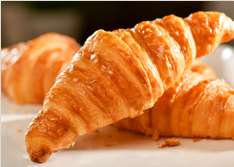
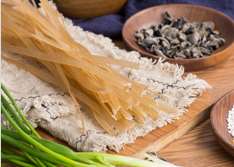
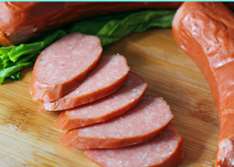
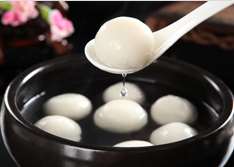
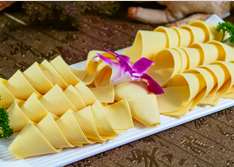
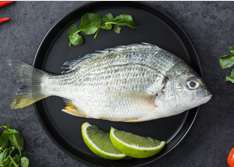
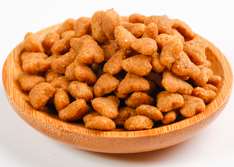
.jpg)
.jpg)
.jpg)
.jpg)
